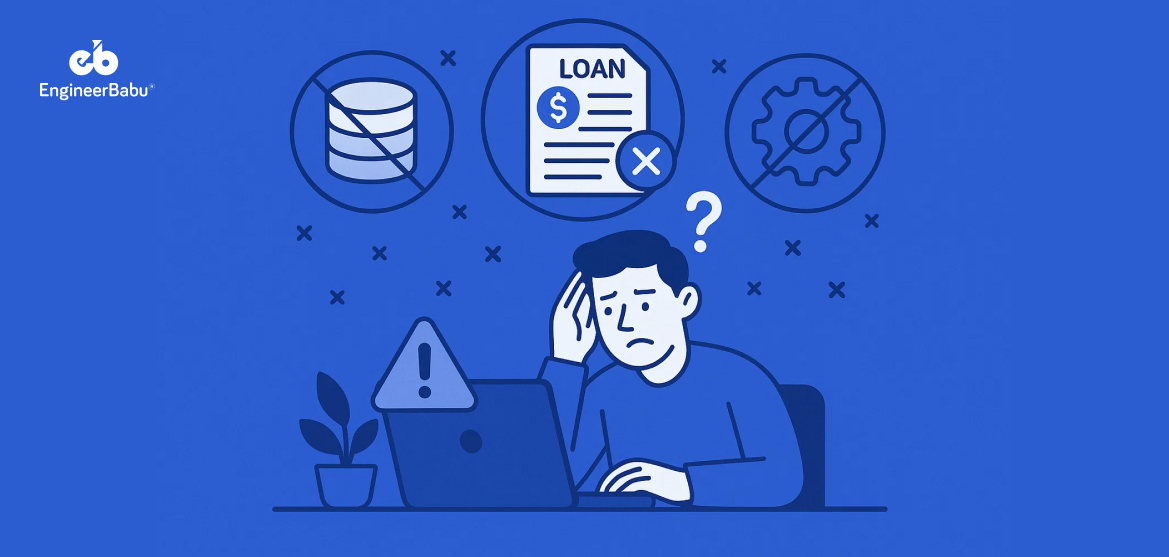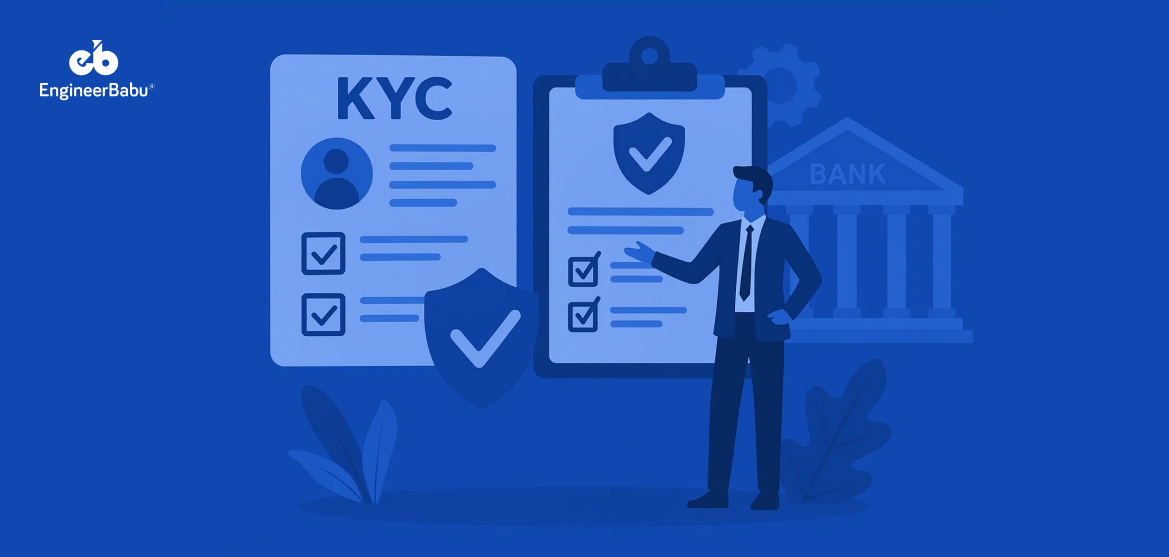A strong lending business is no longer built on paper files, manual approvals, and endless spreadsheets. Today, customers expect fast decisions, seamless onboarding, and personalised interactions. At the same time, lenders need accuracy, compliance, and real-time visibility into every loan lifecycle. That is where technology steps in.
Two tools often mentioned in lending circles are loan management systems vs loan CRMs. While they may sound similar, their roles are quite different. Many lenders adopt one without fully understanding the value of the other or how they can work together.
So, in this article, we will demystify the difference between a Loan Management System and a Loan CRM, so you can see which one your business needs or whether you should use both.
What is a Loan Management System?
A loan management system (LMS) is software designed to oversee the entire lifecycle of a loan from origination, underwriting, servicing and repayment to collections. It’s the operations engine for lenders.
With different types of loan management systems, you can automate bottlenecks, gain visibility into outstanding balances, track delinquencies, enforce compliance and reduce manual work in spreadsheets and paper-based processes.
Moreover, lenders who adopt LMS and automation tools report meaningful efficiency gains. For example, AIO Logic states that automation in lending can reduce processing costs by up to 50 % at each stage.
In practice, this means a lender that once took days or even weeks to approve a loan and begin servicing can instead move in hours, with fewer errors and lower risk. Thus, it’s clear that the LMS becomes the backbone of the lending platform.
What is a Loan CRM?
A Loan CRM is a customer relationship management system designed specifically for lenders to manage leads, build trust, and improve the borrower experience. It supports the pre-loan journey by helping teams capture leads, qualify them, and guide each customer through the right loan offering with timely communication.
With a Loan CRM, lenders can:
- Track every interaction,
- Schedule follow-ups,
- Send reminders,
- Segment customers, and
- Even design personalised offers based on their profiles or loan history.
It also helps sales teams avoid delays, missed calls, and disorganised conversations by keeping all customer information in one place.
Therefore, in the discussion of loan management system vs loan CRM, the CRM stands out as the system that manages relationships, not loan files. Its goal is to make sure promising leads do not slip away and customers stay engaged throughout their loan journey.
Loan Management System vs Loan CRM: Core Differences
Before investing in either platform, it helps to understand where each system fits into your lending journey. A Loan CRM is centred around relationships and conversion, while a Loan Management System handles operations and compliance.
Here are the major differences based on purpose, users, lifecycle, automation, and compliance.
-
Purpose and Business Goal
A Loan CRM helps lenders convert leads into borrowers through systematic communication, follow-ups, and personalised offers. It is designed to improve sales efficiency and customer engagement. A Loan Management System focuses on processing loans, tracking repayments, and reducing operational errors. Its goal is to handle loan workflows with accuracy, speed, and control.
-
Internal Users and Departments
Loan CRM tools are mostly used by sales, marketing, and customer support teams to track interactions and manage relationships. Whereas, a Loan Management System is used by operations, risk, finance, and compliance teams. These teams rely on accurate data, repayment tracking, documentation, and audit trails. So, both tools serve different parts of the same organisation.
-
Stage in Customer Lifecycle
When comparing loan management system vs loan CRM, the CRM supports only the pre-loan side of business. It manages lead capture, qualification, inquiry handling, and conversion. The LMS handles the operational side after approval, including disbursement, EMI management, collections, renewals, and loan closure. Together, they complete the full lending journey.
-
Level of Automation
A Loan CRM automates reminders, follow-ups, lead scoring, and communication tasks. It improves consistency in customer handling but does not manage loan servicing. A Loan Management System automates underwriting, contract generation, EMI scheduling, interest calculations, delinquency alerts, and closure. It brings structure, compliance, and accuracy to loan operations.
-
Compliance and Risk Handling
Loan CRM systems do not support deep compliance or risk rules. They store basic customer information and communication history. A Loan Management System is built to comply with regulatory requirements, maintain digital logs, support KYC, manage loan documents, and prepare audit-ready reports. It helps reduce fraud, misreporting, and manual errors.
Related: Difference Between LOS vs LMS
Feature Comparison Table: Loan Management System vs Loan CRM
To make the difference clearer, here is a quick snapshot of how both systems perform in key areas. This table compares features, usage, and capabilities across lending, operations, and customer management.
It helps you see which system is stronger for which function, so you can identify what your business actually needs.
| Feature / Function | Loan CRM | Loan Management System |
| Lead Capture and Tracking | Yes | No |
| Loan Application Processing | Limited | Yes |
| Underwriting and Risk Assessment | No | Yes |
| EMI and Repayment Management | No | Yes |
| Customer Communication and Follow-ups | Yes | Limited |
| Compliance and Audit Support | No | Yes |
| Document Management (KYC, Agreements) | Limited | Yes |
| Renewal and Cross-sell Opportunities | Yes | Limited |
| Collection Tracking | No | Yes |
| Marketing and Upselling | Yes | No |
How EngineerBabu Helps
Choosing between a Loan CRM and a Loan Management System is important, but the real advantage comes when both work together smoothly. EngineerBabu builds custom solutions that are not only functional but also aligned with how real lending businesses operate.
We develop custom Loan CRM platforms tailored for lenders, NBFCs, digital credit startups, and fintech companies. These CRMs support lead nurturing, customer lifecycle tracking, automated communication, and integration with marketing and support tools. Every feature is designed to help teams convert more leads into active borrowers.
Similarly, our loan management software development handles loan origination, KYC, underwriting, disbursement, EMI management, collections, compliance, and reporting. We also integrate credit scoring, payment gateways, bureau checks, and accounting tools so that operations remain aligned across departments.
Over the years, EngineerBabu has delivered solutions for fintech, lending, NBFC, and BFSI companies. Our experience as the best fintech app development company helps us understand regulations, audits, security needs, and real business challenges.
So, whether you need a standalone Loan CRM or a complete loan servicing platform, we help you build systems that are API-driven, scalable, secure, and future-ready.
Bottom Line
Understanding the difference between a loan management system and a loan CRM is not just a technical decision. It is a strategy choice that affects customer satisfaction, operational efficiency, compliance accuracy, and future scalability.
Instead of asking which one is better, ask which one fits your current stage of growth, and how both can work together to support your lending lifecycle from lead generation to loan closure.
When used together, these systems help lenders capture more quality leads, process loans faster, reduce risk, and deliver a smoother borrower experience. That is why the real value lies not in choosing between a loan management system vs loan CRM, but in building a connected ecosystem that uses both effectively.
If you are planning to build a scalable, secure, and API-ready platform, partner with a trusted lending software development company that understands your industry, compliance needs, and growth goals.
Frequently Asked Questions
-
Is a Loan CRM required if I already use a Loan Management System?
Yes, because a Loan Management System handles loan operations after approval, while a Loan CRM helps generate, track, and convert leads before approval. Both serve different purposes and together support a complete lending lifecycle.
-
Can a Loan CRM and Loan Management System be integrated?
Yes. Integration helps lenders move data smoothly from lead generation to underwriting, disbursement, and servicing. It improves visibility, avoids manual entries, and creates a seamless borrower experience.
-
Which is better for small lending businesses: Loan CRM or Loan Management System?
Small lenders usually start with a Loan CRM to manage inquiries, leads, and communication. As they grow and start handling higher loan volumes, compliance, and EMI tracking, they adopt a Loan Management System for automation and control.
-
What features should I look for in a Loan Management System?
Key features include EMI and repayment tracking, document management, compliance support, payment reminders, risk assessment, user access control, and integration with payment gateways or accounting tools.
-
How long does it take to build a custom loan platform?
The time depends on the scope, features, integrations, and compliance needs. A simple Loan CRM can take a few weeks, while a full Loan Management System with underwriting, disbursement, and reporting may take several months.




